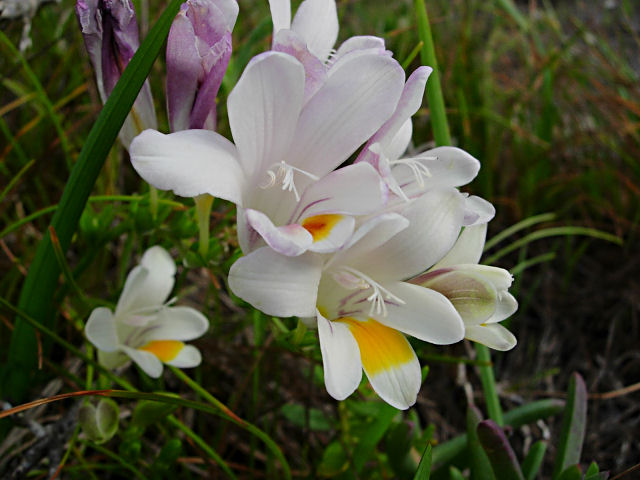
Freesia is a genus of herbaceous perennial flowering vegetation in the family Iridaceae, first referred to as a genus in 1866 by Chr. Fr. Echlon (1795-1868) and known as after German botanist and doctor Friedrich Freese (1794-1878). It really is local to the eastern aspect of southern Africa, from Kenya south to South Africa, most kinds being found in Cape Provinces. Types of the previous genus Anomatheca are actually included in Freesia. The vegetation commonly known as "freesias", with fragrant funnel-shaped blossoms, are cultivated hybrids of lots of Freesia types. Some other kinds are also cultivated as ornamental plants.
They are herbaceous plants which increase from a conical corm 1-2.5 cm diameter, which delivers up a tuft of narrow leaves 10-30 cm long, and a sparsely branched stem 10-40 cm extra tall bearing a few leaves and a loose one-sided spike of plants with six tepals. Many varieties have fragrant narrowly funnel-shaped plants, although those previously placed in the genus Anomatheca, such as F. laxa, have chiseled flowers. Freesias are being used as food crops by the larvae of some Lepidoptera types including Large Yellowish Underwing.
CULTIVATION AND USES
The plant life usually called "freesias" are derived from crosses made in the 19th century between F. refracta and F. leichtlinii. Numerous cultivars have been bred from these species and the red- and yellow-flowered forms of F. corymbosa. Modern tetraploid cultivars have bouquets ranging from white to yellow, green, red and blue-mauve. These are mostly cultivated skillfully in holland by about 80 growers.[3] Freesias can be easily increased from seed. Because of the specific and attractive scent, they are generally used in side ointments, shampoos, candles, etc.[citation needed], however, the plants are mainly used in wedding bouquets. They could be planted in the semester in USDA Hardiness Areas 9-10 (i.e. where in fact the temperature will not show up below about -7 ?C (20 ?F)), and in the springtime in Zones 4-8.
Freesia laxa (formerly called Lapeirousia laxa or Anomatheca cruenta) is one of the other types of the genus which is commonly cultivated. Smaller than the scented freesia cultivars, it has flat somewhat than cup-shaped blooms. Extensive 'forcing' of this bulb occurs in Half Moon Bay in California where several growers chill the bulbs in proprietary methods to satisfy frigid dormancy which results in development of buds in a predicted variety of weeks - often 5 weeks at 55 ?F (13 ?C).
Herbaceous plant life (in botanical use frequently simply natural herbs) are plant life which have no continual woody stem above surface. Herbaceous plants may be annuals, biennials or perennials. Total annual herbaceous plants expire completely by the end of the growing season or when they may have flowered and fruited, plus they then develop again from seed. Herbaceous perennial and biennial crops may have stems that pass away by the end of the growing season, but parts of the plant make it through under or close to the bottom from season to season (for biennials, until the next growing season, when they flower and pass away). New expansion builds up from living tissues remaining on or under the ground, including origins, a caudex (a thickened part of the stem at walk out) or various types of underground stems, such as light bulbs, corms, stolons, rhizomes and tubers. Types of herbaceous biennials include carrot, parsnip and common ragwort; herbaceous perennials include potato, peony, hosta, mint, most ferns & most grasses. In comparison, non-herbaceous perennial plants are woody plant life which have stems above earth that stay alive through the dormant season and develop shoots the next yr from the above-ground parts - included in these are trees, shrubs and vines.
Heart of Gold: Petal by Petal: Freesia

Freesia World Crops Database

Scented Garden : Freesia « Bois de Jasmin

image detail for freesia white freesias spring and summer planting

Tidak ada komentar:
Posting Komentar